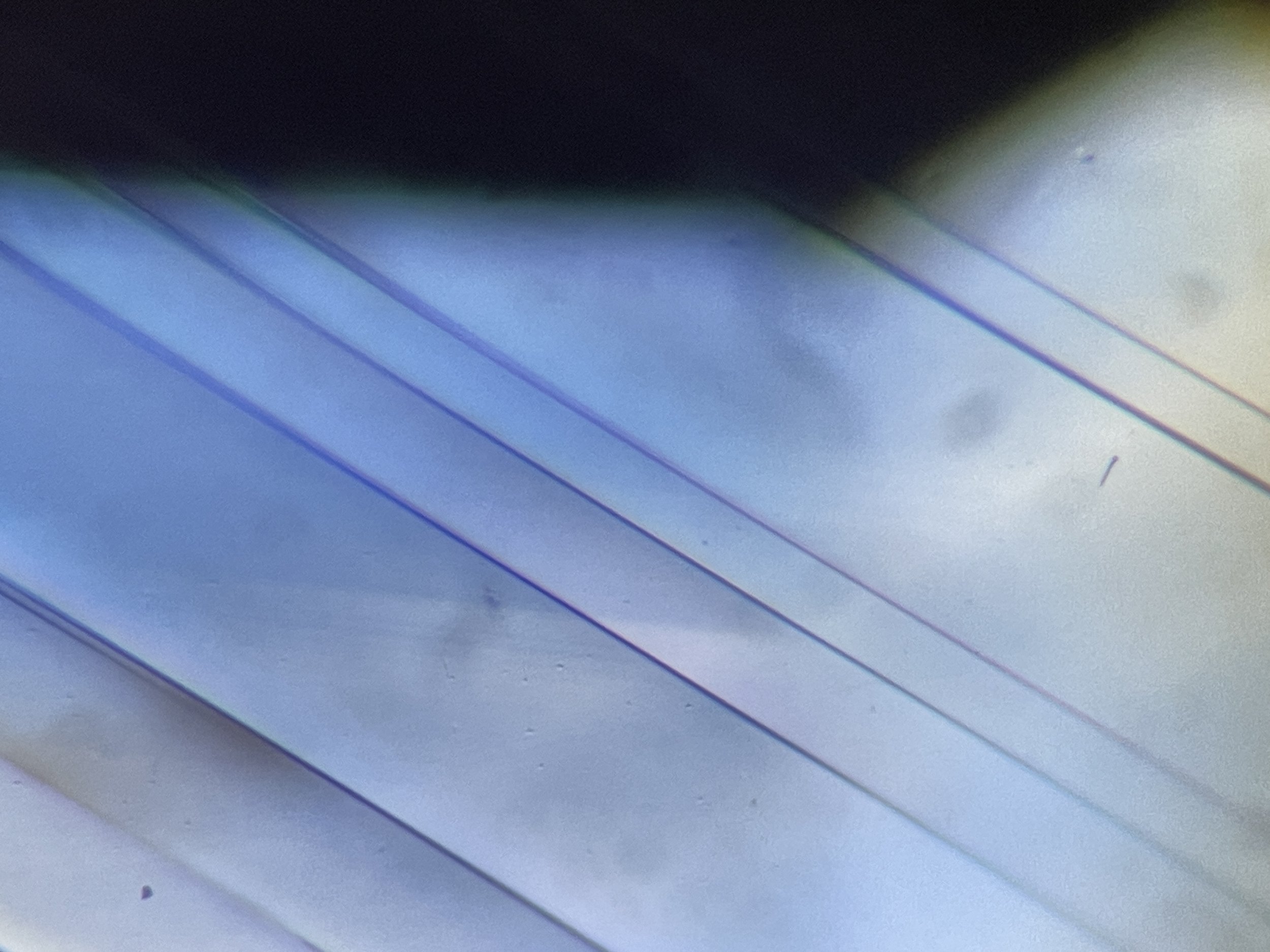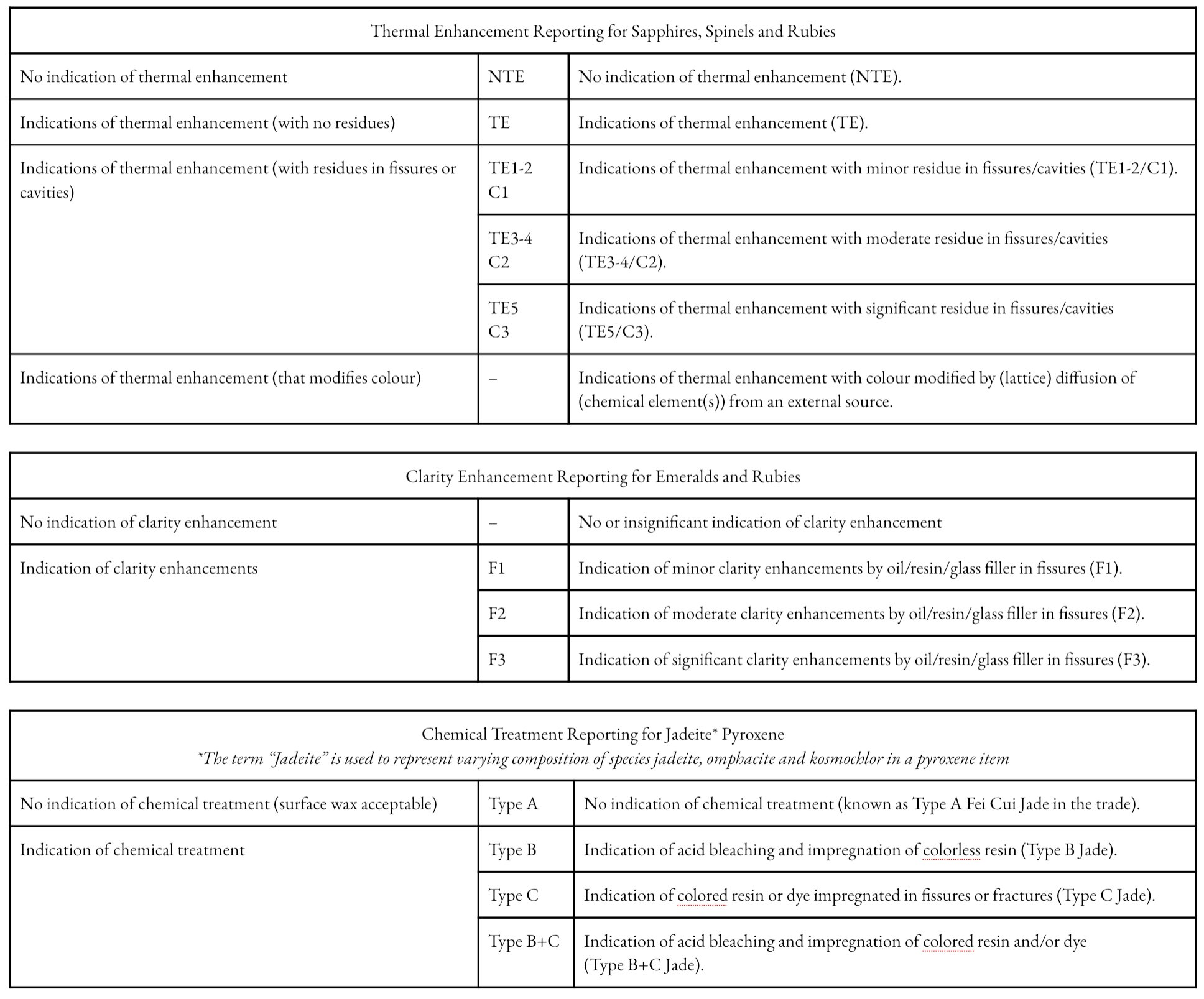
Understanding our reports
Photo: polysynthetic twinning observed in an unheated Madagascar sapphire
limitations you need to know
The results of evaluation performed are based on scientific standards and literature accepted and observations available at the time of evaluation.
No guarantee, value or appraisal of the item in this report is provided by GemRight Gemology. GemRight Gemology assumes no responsibility for any damage or loss, or claims by third parties, which may arise from the issuance, use or misuse of this report. GemRight Gemology, as a professional independent gemological laboratory has no financial interest in any items evaluated.
Opinion(s) may differ regarding the results of evaluation reported. GemRight Gemology will not entertain any dispute of the facts, calculations, outcomes or anything else contained in this report.
An item may be modified and/or enhanced after the issuance of this report. GemRight Gemology can verify the item with the report if necessary.
The photograph(s) provided in this report may differ in size and colour with the actual item(s) evaluated.
GemRight Gemology may note exceptional quality and/or rarity in a report based on practical experience observing market trends over the years.
GemRight Gemology may refuse a request for an evaluation of an item or issuance of a gemological report at any time.
Determination of geographical origin of any gemstone is an expert opinion based on extensive but exhaustive collections of observations and analytical data.
Transparency in clarity
We reviewed and discussed this move for a long time. Does the usual Transparency comment have any use for the trade besides being just a visual identifier? How can we provide more insights on this area that adds value to users of our reports? How can we help users of our reports understand the degree of inclusions in their gemstone in relation to the norm for that species?
As a result, we leaned on basic gemological training:
We provide the norm by stating what clarity type does the gemstone belong to. That is Type 1 < Type 2 < Type 3. This is information readily available in gemological publications and online so that we retain objectivity in providing this information.
We then employ an objective 5-point grading of clarity with the following possible terms:
Severely included > Heavily included > Moderately included > Slightly included < Eye-clean (> Loupe-clean, reserved for gemstones of distinction).
This means that a Slightly included Type 1 gemstone will have inclusions that are less noticeable than a Type 3 gemstone with the same grading.
By virtue of this, users of our reports can also appreciate that rarity increases for better clarity grading especially for Type 2 and 3 gemstones.
We believe this system provides better information for the trade in communicating the strengths of their item. This is often encountered for Type 3 gemstones such as emeralds, where buyers often, at risk of being unreasonable, ask for a eye-clean gemstone.
Proportions in shape
GemRight Gemology is the first in the world to introduce grading on Proportions in gemological reports that give insights on the shape.
We examine the following factors for Proportions:
Symmetry,
Pavilion bulge,
Table size in relation to the girdle circumference, and
Girdle thickness.
We employ a 5-point grading with the following possible terms:
Poor < Fair < Good < Very Good < Excellent (< Exceptional, reserved for gemstones of distinction)
Finish in Cut
GemRight Gemology is the first in the world to introduce grading on Finish in gemological reports that give insights on the Cut.
We examine the following factors for Finish:
Polish (degree of blemish remaining),
Facet symmetry (misshapened facets / irregular facet junctions / facet misalignment), and
Facet survey (number of facets in relation to the size of gemstone)
We employ a 5-point grading with the following possible terms:
Poor < Fair < Good < Very Good < Excellent (< Exceptional, reserved for gemstones of distinction)
We also view the grading on Proportions and Finish as a recognition of the many lapidarists in the trade working to perfect their craft.
Brilliancy of color
GemRight Gemology is also the first in the world to introduce an objective grading on Brilliancy under our Color section, an area overlooked by gemological laboratories but plays such an important role in the selection of gemstones in the trade.
We examine the interplay of the following factors:
Light return,
Windowing, and
Extinction.
We employ a 5-point grading with the following possible terms:
Poor < Fair < Good < Very Good < Excellent (< Exceptional, reserved for gemstones of distinction).
Color: Hue, tone and saturation
We pride ourselves on providing the most detailed color description in our reports among the reputable gemological laboratories, making use the best features from GIA Color System and the Munsell Color System. This section clarifies the possible terms used in our reports for tone and saturation.
Tone (Degree of lightness/darkness of a color):
Colorless < Very Light < Light < Medium Light < Medium < Medium Dark < Dark < Very Dark < Black
Saturation (Intensity or strength of a color):
Brownish/Grayish < Slightly Brownish/Grayish < Very Slightly Brownish/Grayish < Moderately Strong < Strong < Vivid
GemRight Gemology applies certain trade terms describing colors of distinction (e.g. imperial green, pigeon’s blood, royal blue) using a strict definition to assist the trade identify highly desirable hues combined with compatible tone and saturation.
We also note results from color stability tests for applicable gemstones in this section.
Treatment reporting
GemRight Gemology discloses treatment(s) when detected in line with the Laboratory Manual Harmonisation Committee’s (LMHC) recommendations.
Vice versa, no comment will be made when no treatment is detected. This is valid with the exception of emeralds, sapphires, spinels, rubies and other gemstones deemed important to clarify.
In addition, color stability tests will be carried out for all yellow and padparadscha-like fancy sapphires requesting physical report to determine reversible photochromism (also known as tenebrescence).

for the gemstones and jewellery buyers out there, insisting on our reports is insisting on a peace of mind for your precious purchase.
For businesses in the gems and jewellery trade, insisting on our services is insisting on building lasting credibility that differentiates.
Teo Wei Hong, G.G., Founder and Gemologist






